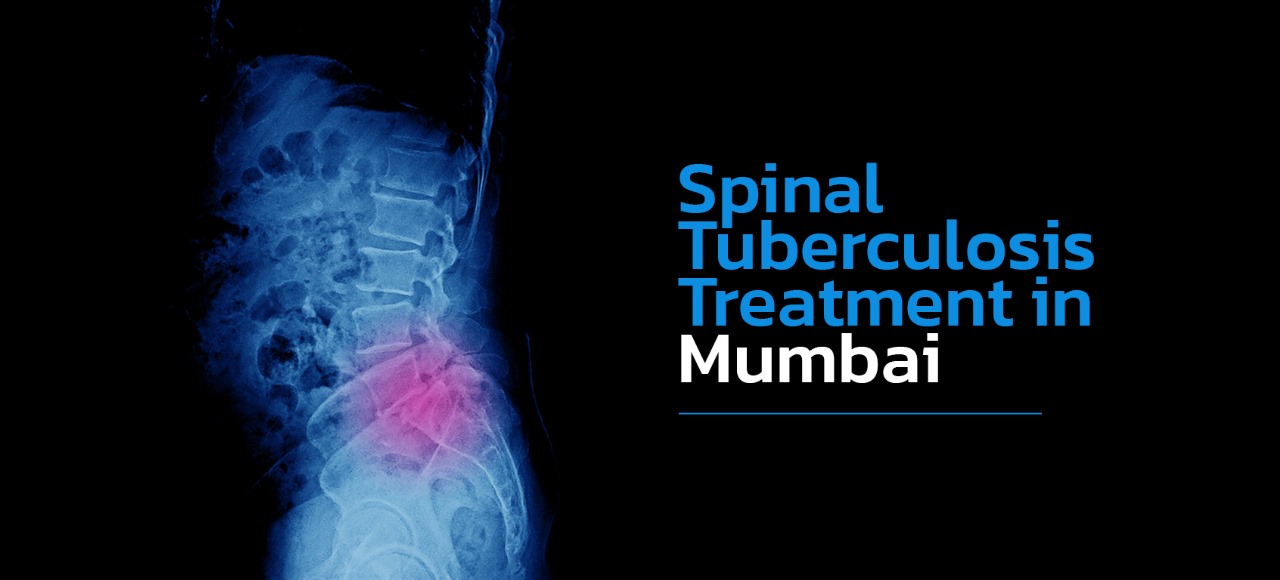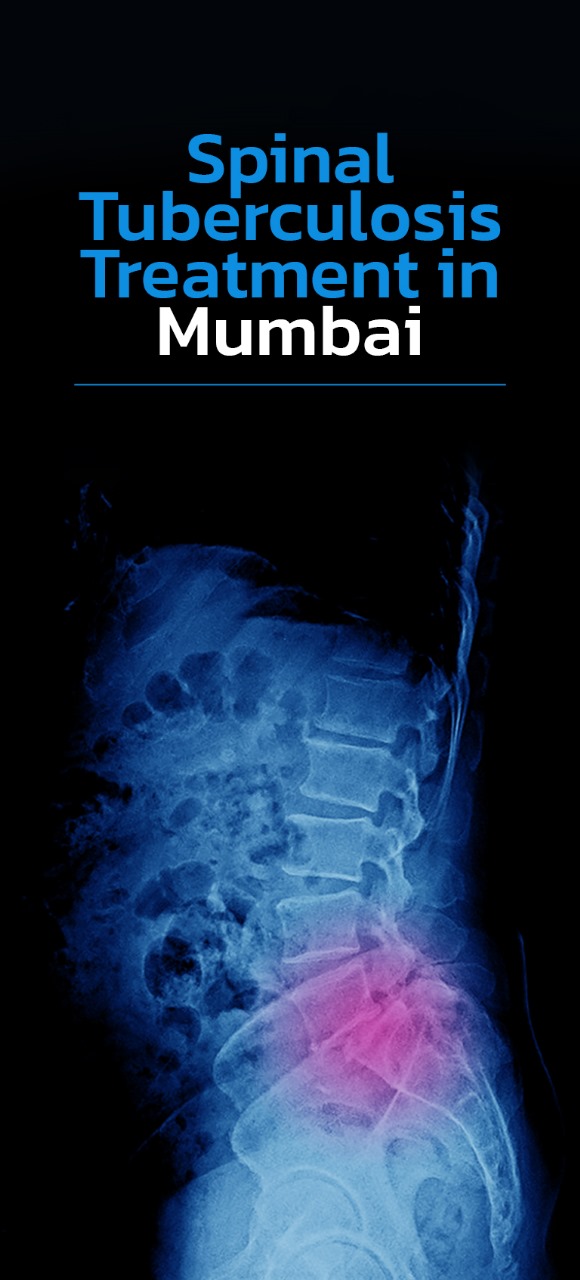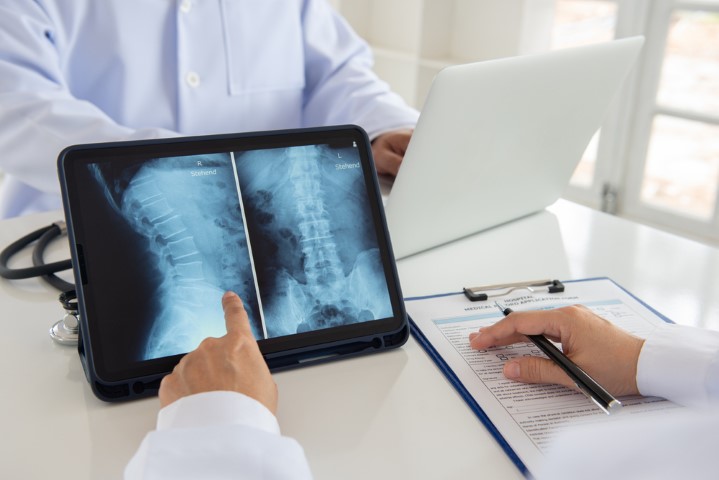

Understanding Spinal Tuberculosis : Symptoms, Causes, and Treatment
Spinal tuberculosis, commonly referred to as Pott’s disease, is a severe manifestation of tuberculosis targeting the spine. It’s imperative to promptly identify and treat this condition. Throughout this comprehensive guide, we will delve into various facets of spinal tuberculosis, including symptoms, causes, treatment modalities, and preventive strategies. By understanding these aspects, individuals can be better equipped to recognize and manage spinal tuberculosis effectively, thereby mitigating its impact on health and well-being.

Meet Dr. Priyank Patel, a distinguished Spinal tuberculosis Specialist in Thane With years of expertise and a passion for patient care, Dr. Patel is dedicated to providing comprehensive treatment for spinal tuberculosis, a condition that affects millions worldwide.Dr. Priyank Patel, a renowned Dedicated Spine Specialist in Thane, emphasizes the importance of vigilant monitoring, prompt diagnosis, and comprehensive management for optimal outcomes in spinal tuberculosis cases. By understanding the symptoms, causes, treatment options, and preventive measures associated with spinal tuberculosis, individuals can take proactive steps to safeguard their spinal health and overall well-being.
Dr. Patel’s expertise and dedication spinal tuberculosis specialist in Mumbai to patient care ensure that individuals receive the highest quality of spinal treatment and support for spinal tuberculosis, leading to improved outcomes and a better quality of life.
What is Spinal Tuberculosis?
Spinal tuberculosis, synonymous with Pott’s disease, is a distinctive form of tuberculosis focusing on the spine. Caused by Mycobacterium tuberculosis, it predominantly affects the vertebrae and surrounding tissues. Understanding this condition’s nature is crucial for its timely diagnosis and appropriate management.
Types of Spinal TB:
- Vertebral osteomyelitis: This form of spinal tuberculosis involves the infection and subsequent destruction of the vertebrae, leading to bone damage and instability in the spine. It can result in severe back pain and structural abnormalities.
- Psoas abscess: Tuberculosis bacteria can cause the formation of abscesses in the psoas muscle, which runs along the lower spine and plays a crucial role in hip movement. Psoas abscesses can lead to localized pain, swelling, and discomfort, especially in the lower back and abdomen.
- Cold abscess: Unlike traditional abscesses characterized by redness, warmth, and inflammation, cold abscesses associated with spinal tuberculosis present as painless, fluid-filled masses. These abscesses may develop gradually and are often discovered incidentally during imaging studies.
Symptoms of Spinal Tuberculosis

Spinal tuberculosis symptoms often include-
- Persistent back pain: The hallmark symptom of spinal tuberculosis is persistent back pain, which is typically dull and may worsen over time. This pain is often more pronounced at night and may not respond to conventional pain management techniques.
- Night sweats: Tuberculosis infection can trigger excessive sweating, particularly during sleep, regardless of ambient temperature. Night sweats are often profuse and may disrupt sleep patterns, leading to fatigue and discomfort.
- Unexplained weight loss: Spinal tuberculosis can cause unexplained weight loss despite maintaining a regular diet and activity level. This weight loss is often significant and may be accompanied by loss of appetite and general weakness.
- Neurological deficits: As spinal tuberculosis progresses, it can lead to compression of the spinal cord or nerve roots, resulting in neurological deficits such as weakness, numbness, or tingling in the limbs. These deficits may affect mobility and sensory function, impacting overall quality of life.
Causes and Risk Factors
- Spread of Mycobacterium tuberculosis: Spinal tuberculosis causes significant concern due to its primary culprit, the bacterium Mycobacterium tuberculosis , which spreads through the bloodstream to infect the spine. Individuals with active tuberculosis elsewhere in the body are at higher risk of developing spinal tuberculosis.
- Weakened immune system: Immune-compromised individuals, such as those living with HIV/AIDS or receiving immunosuppressive therapy, are more susceptible to tuberculosis infection, including spinal tuberculosis. A weakened immune system reduces the body’s ability to fight off the TB bacteria.
- Close contact with infected individuals: Direct or prolonged exposure to individuals with active tuberculosis increases the risk of contracting the infection. This risk is particularly high in crowded or poorly ventilated settings where airborne transmission of tuberculosis is more likely.
- Living in crowded or unsanitary conditions: Environmental factors, such as overcrowding, poor ventilation, and inadequate sanitation facilities, contribute to the spread of tuberculosis. Individuals living in such conditions are at higher risk of exposure to the TB bacteria and subsequent infection.
Complications
If left untreated, spinal tuberculosis can lead to severe complications such as spinal deformity, neurological deficits, paralysis, and even death. Prompt diagnosis and appropriate treatment are essential to prevent these complications.
Stages of Spinal Tuberculosis
Spinal tuberculosis progresses through several distinct stages, each marked by specific pathological changes and clinical manifestations. Understanding these stages is crucial for timely diagnosis and effective management of the disease.
- Initial Infection and Inflammation: Spinal tuberculosis begins with the initial infection and inflammation of the vertebral bones. The tuberculosis bacteria, Mycobacterium tuberculosis, infiltrate the spine through the bloodstream, causing inflammation and destruction of the vertebral tissues. During this stage, patients may experience mild symptoms such as localized back pain and stiffness.
- Formation of Tuberculous Granuloma: As the infection progresses, the body’s immune response leads to the formation of tuberculous granulomas within the affected vertebral bones. These granulomas are characteristic lesions composed of immune cells, fibrous tissue, and bacteria. The granulomas serve as a battleground between the host immune system and the tuberculosis bacteria, leading to the containment of the infection within the vertebral tissues.
- Vertebral Collapse: Without timely intervention, spinal tuberculosis can advance to vertebral collapse, resulting from the progressive destruction of bone tissue. The collapse of vertebral bodies leads to structural instability and compression of nearby spinal nerves or the spinal cord. Patients may experience worsening back pain, deformity of the spinal column, and neurological deficits such as weakness, numbness, or paralysis in the limbs.
- Spinal Deformity: Prolonged vertebral collapse and tissue destruction can lead to the development of spinal deformities such as kyphosis or gibbus deformity. Kyphosis is characterized by an abnormal curvature of the spine, resulting in a hunched or rounded back. Gibbus deformity refers to a sharp angular deformity of the spine caused by collapsed vertebral bodies. These deformities can significantly impact mobility, posture, and quality of life.
- Neurological Complications: In severe cases of spinal tuberculosis, compression of the spinal cord or nerve roots can lead to neurological complications. Patients may experience progressive weakness, sensory loss, bladder or bowel dysfunction, and even paralysis below the level of the spinal lesion. Neurological complications require urgent medical attention and may necessitate surgical intervention to relieve pressure on the spinal cord and prevent permanent disability.
Understanding the stages of spinal tuberculosis is essential for healthcare providers to initiate appropriate diagnostic tests and treatment interventions promptly. Early detection and management of the disease can prevent irreversible damage to the spine and neurological complications, improving patient outcomes and quality of life.
Diagnosis

- Medical history and physical examination: Healthcare providers evaluate a patient’s medical history and conduct a thorough physical examination to assess for symptoms and risk factors associated with spinal tuberculosis. Key symptoms include persistent back pain, night sweats, unexplained weight loss, and neurological deficits.
- Imaging tests: X-rays, MRI (magnetic resonance imaging), and CT (computed tomography) scans are commonly used to visualize spinal abnormalities indicative of tuberculosis infection. These imaging studies can reveal characteristic findings such as vertebral destruction, abscess formation, and spinal cord compression.
- Laboratory tests: TB culture and PCR (polymerase chain reaction) tests are performed on biological samples, such as sputum or tissue biopsy specimens, to detect the presence of Mycobacterium tuberculosis. These tests confirm the diagnosis of spinal tuberculosis and help guide treatment decisions.
Treatment Options
- Multi-drug anti-tuberculosis regimen: The cornerstone of spinal tuberculosis treatment is a multi-drug anti-tuberculosis regimen consisting of several medications, typically including isoniazid, rifampicin, pyrazinamide, and ethambutol. This combination therapy effectively targets the TB bacteria, reduces the risk of drug resistance, and promotes complete eradication of the infection.
- Spinal bracing: In some cases, supportive bracing may be recommended to provide stability to the spine and alleviate pain during the treatment period. Spinal braces help prevent spinal deformities and facilitate healing of vertebral lesions.
- Surgery for severe cases: Surgical intervention may be necessary for patients with severe or complicated spinal tuberculosis, such as those with spinal instability, neurological deficits, or extensive vertebral destruction. Surgical procedures may include spinal stabilization, decompression of neural structures, and removal of infected tissue.
Treatment Options
- Multi-drug anti-tuberculosis regimen: The cornerstone of spinal tuberculosis treatment is a multi-drug anti-tuberculosis regimen consisting of several medications, typically including isoniazid, rifampicin, pyrazinamide, and ethambutol. This combination therapy effectively targets the TB bacteria, reduces the risk of drug resistance, and promotes complete eradication of the infection.
- Spinal bracing: In some cases, supportive bracing may be recommended to provide stability to the spine and alleviate pain during the treatment period. Spinal braces help prevent spinal deformities and facilitate healing of vertebral lesions.
- Surgery for severe cases: Surgical intervention may be necessary for patients with severe or complicated spinal tuberculosis, such as those with spinal instability, neurological deficits, or extensive vertebral destruction. Surgical procedures may include spinal stabilization, decompression of neural structures, and removal of infected tissue.
Recovery and Rehabilitation
Recovery from spinal tuberculosis requires a comprehensive approach, including medication adherence, physical therapy, and regular follow-up appointments with healthcare providers. Rehabilitation aims to restore mobility, alleviate pain, and prevent long-term complications.
Prevention and Outlook
- TB Vaccination: Getting vaccinated against tuberculosis can help prevent spinal tuberculosis by boosting the body’s immune response to the TB bacteria.
- Infection Control Practices: Practicing good infection control measures, such as proper ventilation, regular cleaning, and disinfection of living spaces, can reduce the risk of TB transmission.
- Early Detection and Treatment: Early diagnosis and prompt initiation of treatment for active TB cases can prevent the spread of the infection and minimize the risk of developing spinal tuberculosis.
- Favorable Outlook with Early Diagnosis: With timely diagnosis and appropriate treatment, the outlook for spinal tuberculosis is generally favorable. Early intervention can prevent complications and improve long-term outcomes.
- Long-Term Management: However, spinal tuberculosis may require long-term management, including medication adherence and regular follow-up appointments, to ensure complete recovery and prevent disease recurrence.
How to reduce the risk of contracting spinal TB
- Maintain a healthy lifestyle: Adopting a healthy lifestyle that includes a balanced diet, regular exercise, and adequate sleep supports overall health and strengthens the immune system, reducing the risk of tuberculosis infection, including spinal tuberculosis.
- Practice good hygiene: Practicing good hygiene habits, such as frequent handwashing with soap and water, especially before eating or touching the face, helps prevent the transmission of tuberculosis bacteria from contaminated surfaces to the mouth, nose, or eyes.
- Avoid close contact with individuals with active TB: Limiting close contact with individuals known to have active tuberculosis reduces the risk of exposure to the TB bacteria, particularly in crowded or poorly ventilated settings where airborne transmission is more likely.
- Seek prompt medical attention if TB symptoms develop: Recognizing and promptly reporting symptoms of tuberculosis, such as persistent cough, fever, night sweats, and unexplained weight loss, to healthcare providers facilitates early diagnosis and treatment, reducing the risk of disease transmission to others.
- Support public health efforts: Advocate for public health initiatives aimed at preventing and controlling tuberculosis, such as TB screening, vaccination programs, and access to healthcare services, to reduce the burden of tuberculosis in communities and improve overall health outcomes.
